Artificial Intelligence (AI) has been the talk of the town since AI tools like ChatGPT and Midjourney launched in 2022. Ever since, people have been using AI to push the boundaries of creativity and imagination. One of the most popular ways of using AI has been to envision the future. After all, the unknown is an obsession that no human being can seem to shake off. Over the past year, futuristic images of Visakhapatnam have surfaced online, with AI-generated visions of what the city might look like in a few years.
However, AI serves more of a purpose than painting the future – it can also colour the past. This World Photography Day 2024, modern technology was applied to breathe new life into history as AI was used to add colour to the first-ever B&W images of Visakhapatnam.
So, take a trip back in time and have a look at some of these vintage B&W images of Visakhapatnam, newly colourised!
The year was 1905 and the town’s first photographer, C Moonesamy Mudaliar, took the first images of Vizag in Black & White. On Photography Day 2024, we can reflect on what effect Artificial Intelligence (AI) could have had on adding colour to Mudaliar’s photography.
In 1905, Vizag was a small town of 20,000 people who resided mainly near Soldierpet. There were no motor vehicles as jutkas, hand-pulled rickshaws and bullock bandies plied the streets. There was no industry with exhaust stacks and waste to pollute the air. Skies over Vizag were clear, the light of the sun sharp and the landmarks picturesque. Travellers to Vizag arrived by steamer and their first view of Vizag was the imposing sight of the Dargah, Temple and Chapel of Ross Hill. Mudaliar captured this sight with the brilliant light of yesteryear. In the foreground below the Chapel and Temple is the Harbour Master’s Office. Below the Dargah is the Sea Customs Office, ruined in the cyclone of 1923, and finally demolished in 1990.
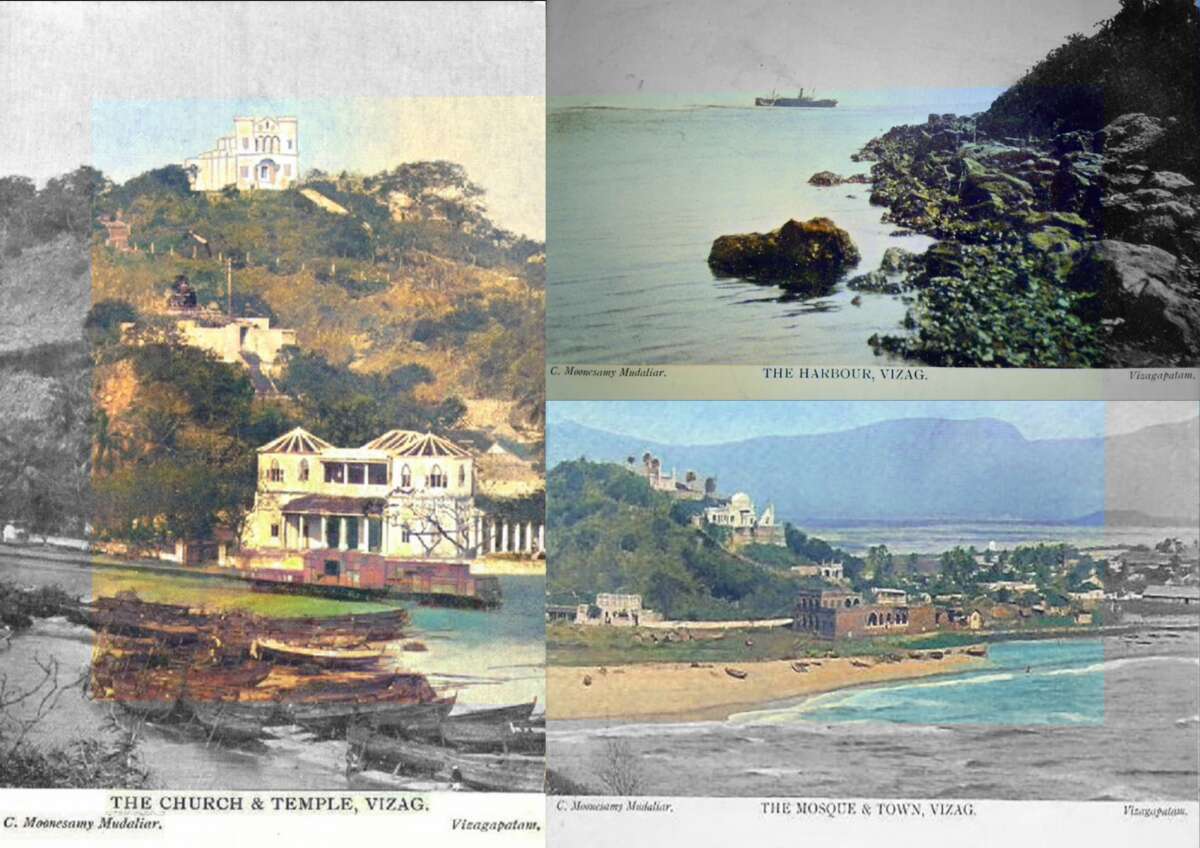
Moonesamy Mudaliar
Mudaliar’s photo studio was opposite the old Collectors Office (today Queen Mary Girl’s School). What better venue to expose Mudaliar’s postcard of yesteryear to the modern power of Artificial Intelligence (AI)?
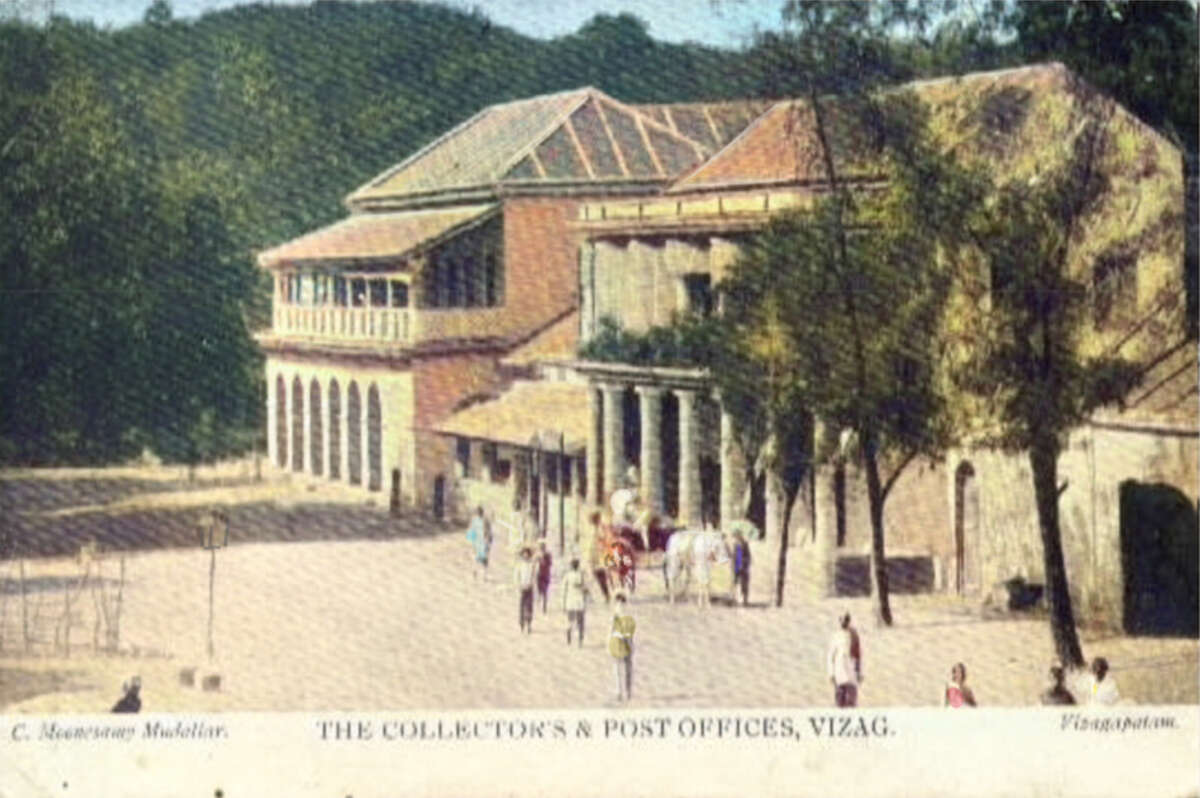
The latest landmark of that era was the building of the new Vizag Lighthouse. Mudaliar had captured the B&W image for his postcard with the new lighthouse brightly dressed with all flags flying and the iconic St Aloysius High School in the background. AI was able to add to the colours’ of the flags dressing the lighthouse.
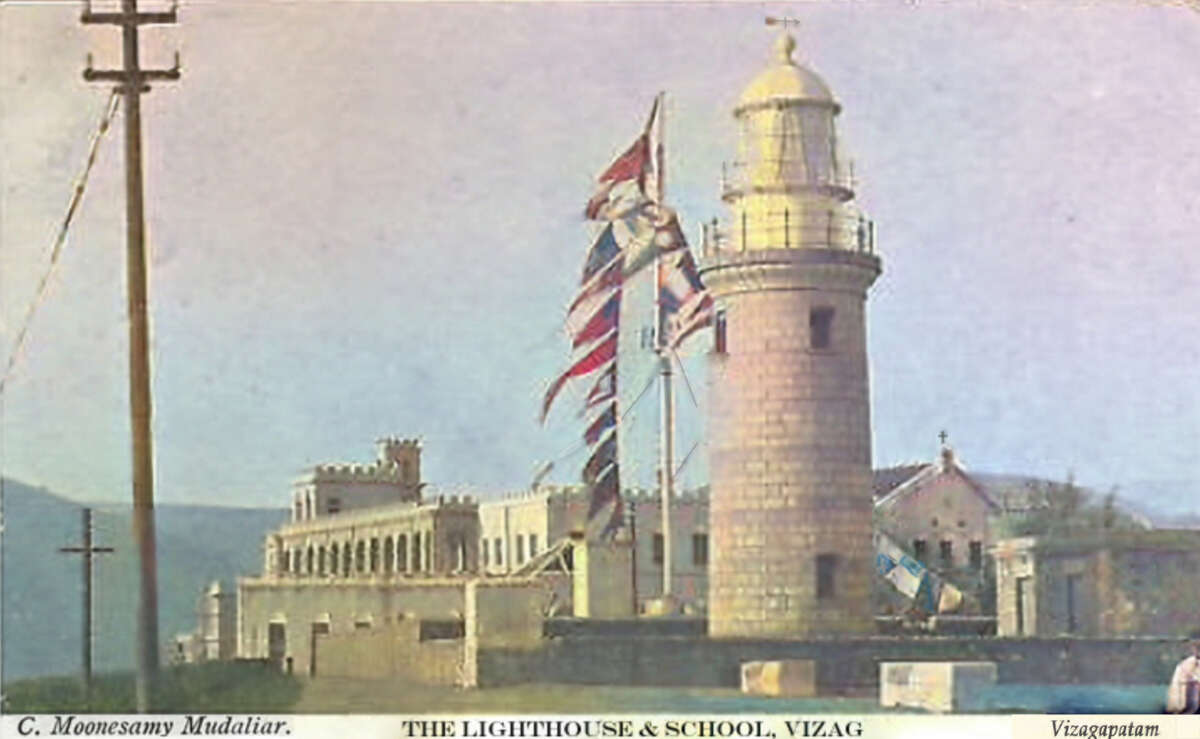
C Moonesamy Mudaliar
Ironically, Mudaliar’s grandchildren and great-grandchildren studied at St Aloysius and furthered the family photography legacy with the Rathnam Studios and photographer PN Rajagopal into the 1960s (you can read more about them here).
The maidan opposite St Aloysius was the main venue for community gatherings in 1905. A festive occasion was captured by Mudaliar and given a new light by AI.
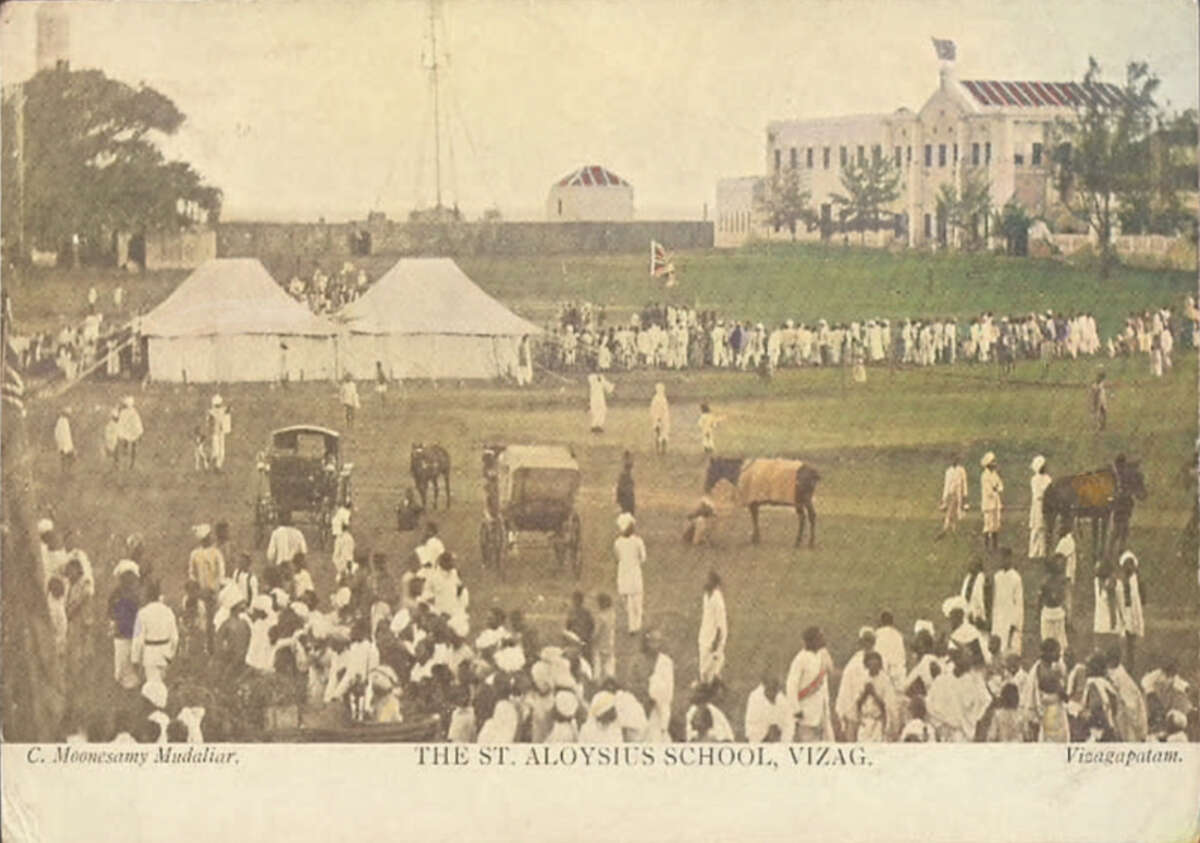
The Beach Road was regarded as the picturesque route from Vizag to the limits of the town and where the jungle of Waltair started. Uninterrupted beach views, crashing surf, coconut palms and cool breezes engaged townsfolk on this path with a row of buildings none higher than two levels.
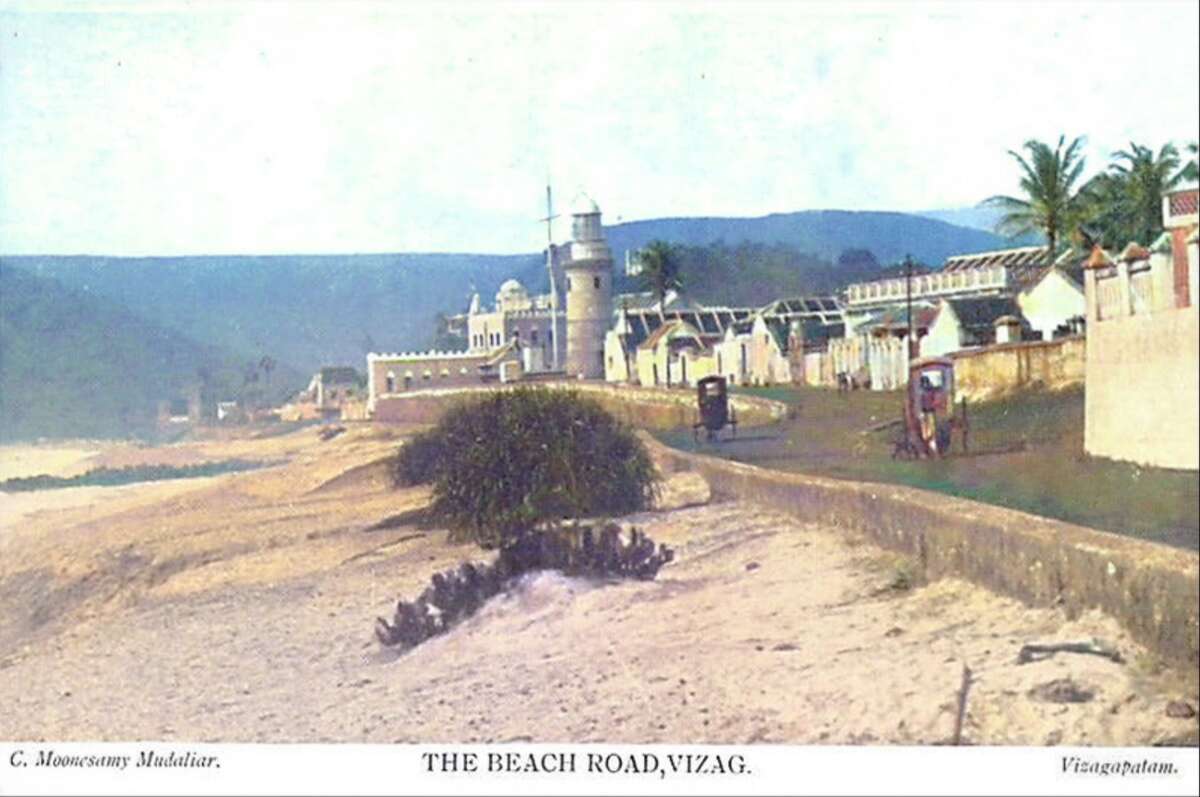
Moonesamy Mudaliar
At that time, Waltair was a distant suburb where the European population and Zamindar families built their summer bungalows. The sandy beach was lined with lush growth and Palmyra trees with a clear stream or two. A marker near the Beach Road named Scandal Point set the limits of the old town.
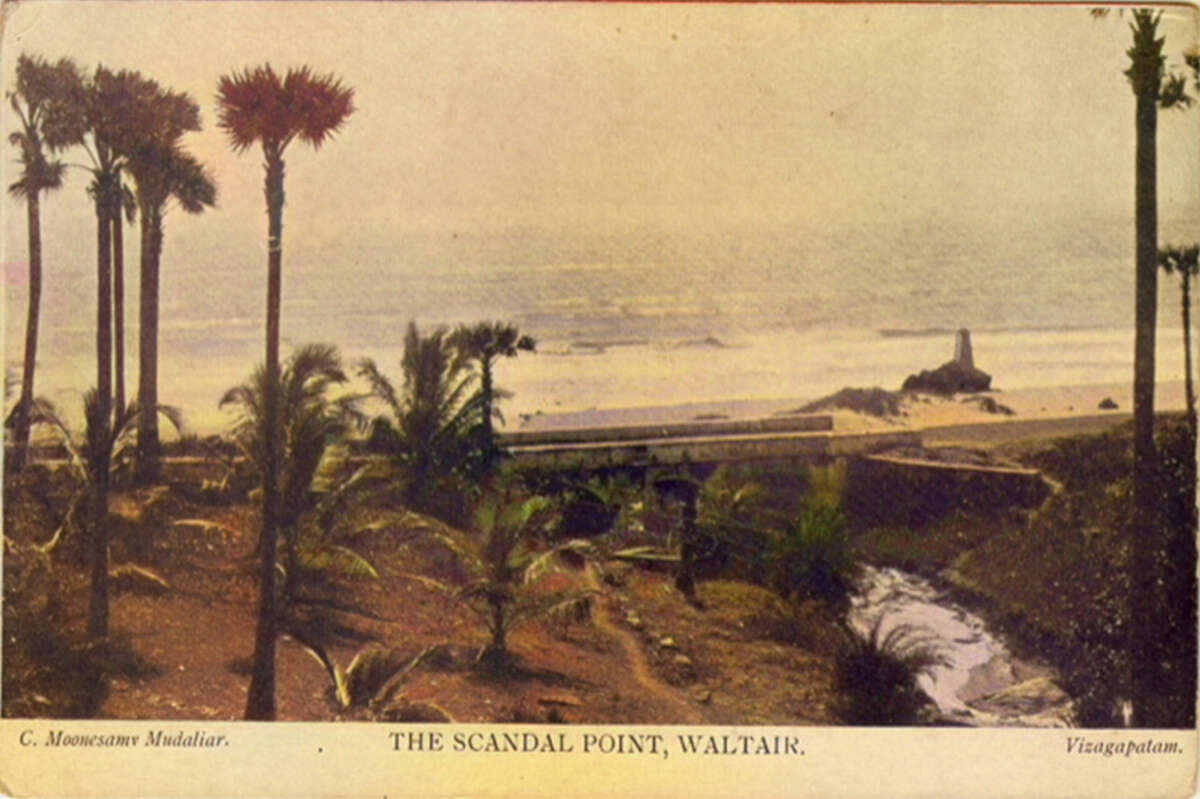
Artificial Intelligence is the latest of the technical innovations that have transformed the art of photography over the last 120 years. From the first silver gelatin prints and cumbersome cameras to hand-coloured images, colour photography, single-lens reflex (SLR), instamatic and Polaroid cameras. Coated lenses telephoto lenses and miniaturization have led to today’s colour camera and digital images from every smartphone. Moving silent images to B&W movies, sound, technicolour, television and wide-screen movie blockbusters provide entertainment these days. Digital video captures the fun and games of everyday life. We can only imagine what the next 100 years will bring, but Moonesamy Mudaliar’s B&W images of old Visakhapatnam will always be cherished for their authentic record of the Vizag of yesteryear.
Should you have an anecdote or history on Vizag, the author would appreciate you contact him.
Written by John Castellas whose family belonged to Vizag for 5 generations. Educated at St Aloysius, migrated to Melbourne, Australia in 1966, former General Manager Engineering at Boeing & Qantas Airways, in retirement Lecturers in Aviation Management at Swinburne University and is a Vizag aficionado. He can be contacted at [email protected]
Stay tuned to Yo! Vizag website and Instagram for more stories about Visakhapatnam.










Discussion about this post